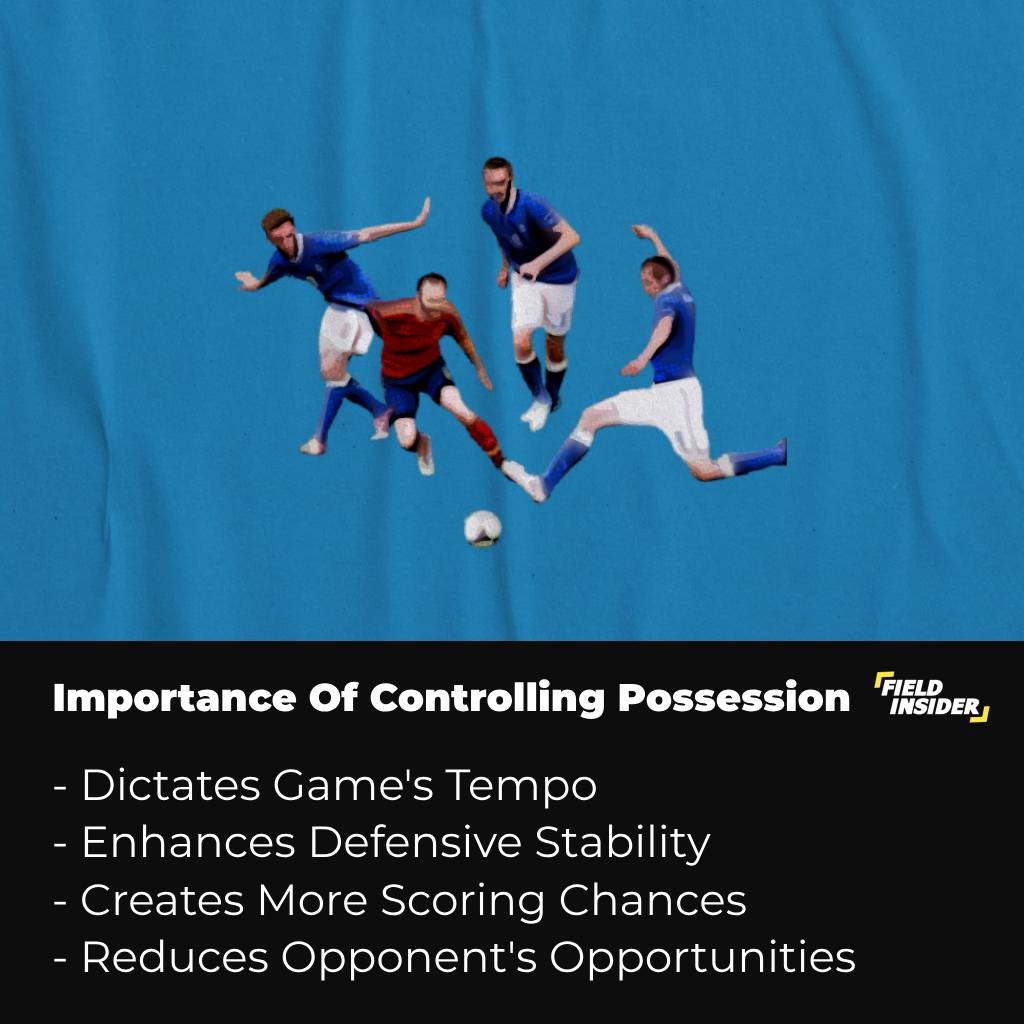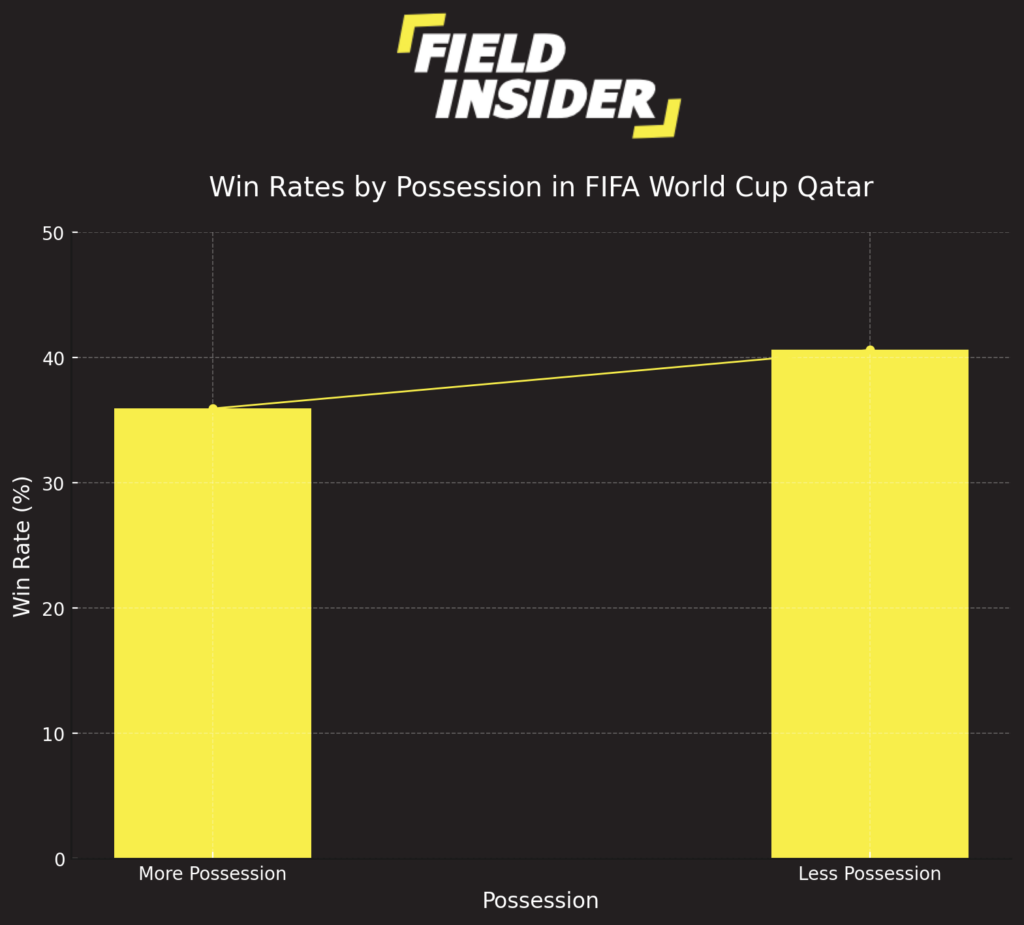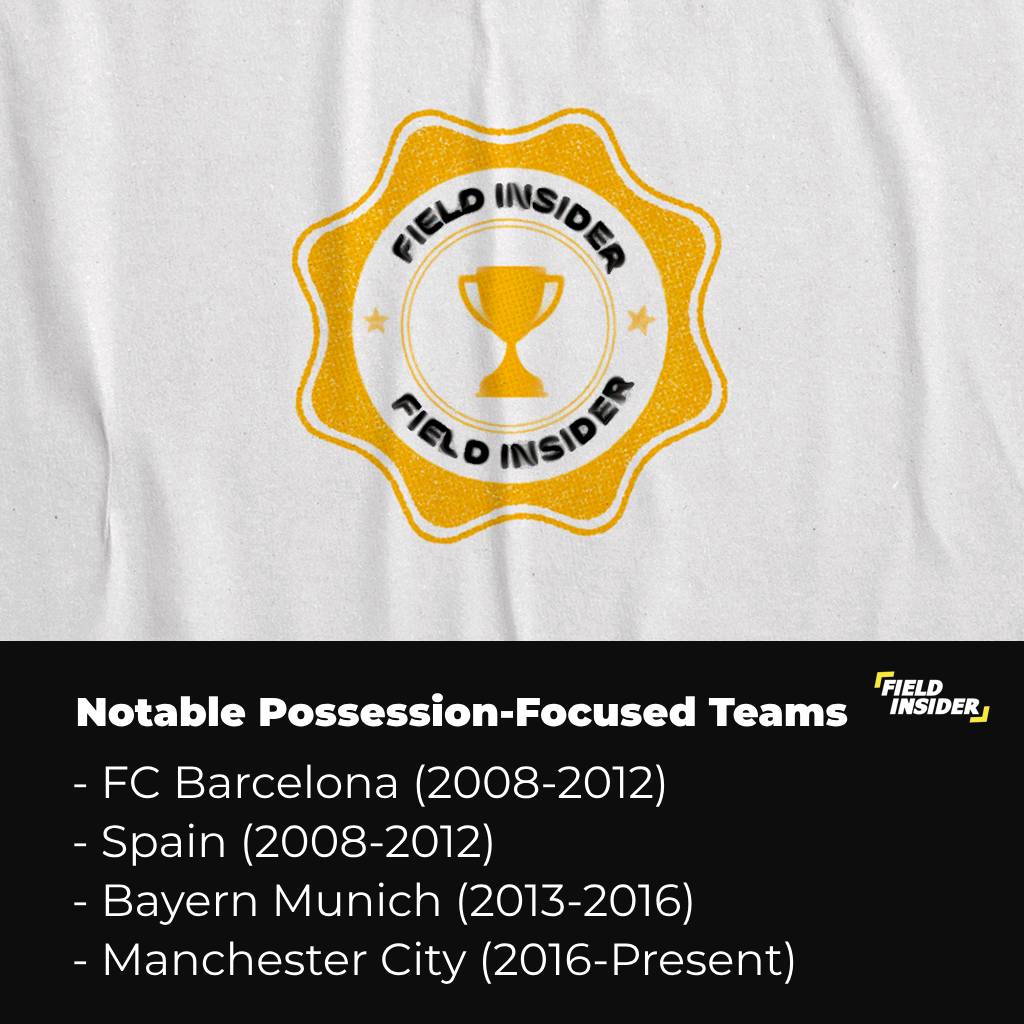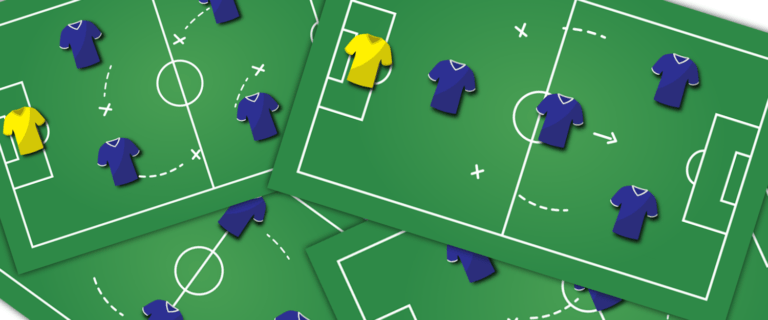Controlling Possession In Football: Full Guide
Controlling possession in football is not just a skill but a decisive factor that can determine the outcome of a match. It’s about more than merely holding onto the ball; it involves strategically dictating the pace of the game, creating scoring opportunities, and reducing the opponent’s attacking threats.
This comprehensive guide delves into the nuances of controlling possession , offering insights into its fundamentals, the importance of passing, player roles, tactical strategies, and more.
Key Takeaways
| Aspect | Key Points |
|---|---|
| Fundamentals | Controlling Possession is crucial for game management. Key metrics include pass completion rate and time in possession. |
| Passing | Critical for possession control. Types of passes and their application matter. Tips for enhancing passing skills. |
| Player Positions | Different positions contribute uniquely to possession. Midfielders are pivotal; formations like 4-3-3 and 4-4-2 are essential. |
| Possession Strategies | Includes possession-oriented tactics, transition play, and breaking down defenses. |
| Drills and Training | Individual and team drills to improve passing, dribbling, and ball control. |
| Game Management | Strategies for prioritizing possession and closing out games, avoiding common mistakes. |
| Psychological Aspect | Focus and confidence are vital in possession play, along with dealing with pressure and turnovers. |
| Case Studies | Analysis of top football teams and their possession tactics, like Barcelona’s Tiki-Taka. |
| Continuous Improvement | Emphasizing the importance of practice and application in mastering possession control. |
The Fundamentals of Controlling possession
Definition of Possession Control in Football
Possession control in football is the ability to maintain control of the ball during a match, dictating the pace and direction of play.
It’s a strategic element that influences both offense and defense. Understanding possession control is essential for any team aiming to dominate their games.
Why Controlling possession Matters

Controlling possession is pivotal in football as it allows a team to create more scoring opportunities while limiting those of the opponent.
Teams with higher possession percentages often control the tempo of the match, making it difficult for opponents to establish their game plan. This concept is further elaborated in our analysis of Football Scenarios.
Key Statistics and Metrics to Measure Possession Control
To effectively measure possession control, key statistics such as pass completion rate, time in possession, and number of successful passes are utilized.
These metrics provide a quantitative view of how well a team is controlling possession and can be crucial for tactical adjustments. Understanding these statistics is vital for any football strategy, as discussed in our guide on Team Analysis.
The Role of Passing in controlling possession
The Importance of Accurate Passing
Accurate passing is the cornerstone of effective possession control in football. It ensures the smooth transition of the ball across the field, facilitating control and creating scoring opportunities.
Mastery of passing is not just a skill but a critical tactical element in dominating the game. For an in-depth understanding, visit our focused piece on Ball Retention Training.
Types of Passes and When to Use Them
Understanding the various types of passes—short passes, long balls, through passes, and more—is crucial for any player. Each type serves a specific purpose and is effective in different game situations.
The decision of when to use a particular pass can significantly impact the game’s outcome. Learn more about this in our dedicated section on Football Training Exercises at Home.
Tips for Improving Passing Accuracy
Improving passing accuracy involves both individual skills and team coordination. Drills focusing on pass accuracy, strength, timing, and decision-making are essential.
Regular practice, combined with tactical understanding, significantly enhances a team’s passing efficiency. For practical tips on enhancing passing skills, check out Individual Football Training.
Player Positions and Their Impact on Possession Control
Analysis of Different Player Positions and Their Roles in Possession Control
Each player position, from defenders to forwards, has a distinct role in possession control . Understanding these roles is crucial for effective team play.
For instance, midfielders are often the pivot for ball distribution, while attackers apply pressure and create spaces. Explore more on this topic in our detailed article on Attacking Football Positions.
How Midfielders, Defenders, and Forwards Contribute in controlling Possession
Midfielders orchestrate the game’s rhythm, defenders initiate plays from the back, and forwards hold up the ball to allow team support. Each position contributes uniquely to a team’s overall possession strategy.
Effective coordination among these roles is key to maintaining control over the game. For insights into specific roles, see our guide on Football Positions.
Tactical Formations for Effective Possession Play
Different tactical formations can be employed to enhance a team’s possession control. Formations like 4-3-3, 4-4-2, and 3-5-2 offer various advantages in maintaining ball control and dominating play.
Choosing the right formation based on the team’s strengths and the opponent’s weaknesses is a critical strategic decision. Learn about various formations and their impact on possession in Football Formations.
Strategies for Maintaining Possession
Possession-Oriented Tactics
Possession-oriented tactics focus on controlling the game through continuous ball retention. This approach involves short passing, intelligent movement off the ball, and patient build-up play.
Teams employing these tactics often dictate the match tempo, gradually breaking down the opponent’s defense. For a deeper understanding of these tactics, explore our article on Tiki-Taka, a renowned possession-based strategy.
Transition Play: Winning Back Possession Quickly
Transition play is critical in swiftly shifting from defense to attack, emphasizing the quick retrieval of possession.
Effective transition play requires players to be alert, positionally aware, and ready to exploit spaces left by the opposition. This concept is vital in modern football and is detailed further in our guide on 7-a-Side Counter-Attacking.
Breaking Down Stubborn Defenses
Breaking down well-organized defenses requires strategic possession play. This involves varied passing, utilizing the width of the pitch, and creative movement from forwards and midfielders.
Patience and tactical flexibility are key, as well as the ability to switch play and create mismatches.
Possession vs. Victory: Insights from FIFA World Cup Qatar
A revealing bar chart from the FIFA World Cup in Qatar challenges traditional views on the strategy of possession in football. The data shows that teams with less possession achieved a higher win rate (40.62%) compared to those with more possession (35.93%).

This visual representation underscores a perplexing aspect of football tactics: greater possession does not necessarily lead to more wins. The findings from the men’s tournament in Qatar resonate with the broader, complex narrative of football strategy.
In essence, while teams with a strategy of maintaining possession did well in women’s competitions, this approach did not translate to the same level of effectiveness in the men’s games.
In brief, the chart illustrates that a high possession percentage is not a surefire strategy for winning matches. Neither a possession-heavy approach nor a defensive one can independently guarantee victory, as shown in the World Cup outcomes.
Individual and Team Drills for Possession Control
Drills designed to improve possession control can be divided into two main categories: individual drills, which players can practice alone and team drills, which involve coordinated team efforts.
| Type | Drill Name | Description | Objective |
|---|---|---|---|
| Individual | Ball Control Zigzag | Dribble the ball through a series of cones arranged in a zigzag pattern. | Improve close ball control and quick direction changes. |
| Individual | Passing Wall Work | Use a wall to practice passing and receiving, varying distance and power. | Enhance passing accuracy and first touch control. |
| Individual | Juggling Mastery | Juggle the ball using feet, thighs, and head to keep the ball in the air as long as possible. | Develop touch and coordination with the ball. |
| Team | Possession Box | Teams compete to maintain possession within a marked square. | Foster quick passing and movement off the ball. |
| Team | Small-Sided Games | Play a reduced-size game focusing on maintaining possession. | Encourage team coordination and spatial awareness. |
| Team | Rondo (Keep-Away) | Players form a circle to keep the ball away from one or two players in the middle. | Improve passing under pressure and tight space maneuvering. |
The table summarizes drills that can be implemented by individuals or teams to bolster their possession skills. Each drill focuses on a specific aspect of possession, from ball control to spatial awareness, and is designed to cultivate a player or team’s ability to retain possession under various circumstances.
Case Studies of Successful Possession-Focused Teams
Analyzing successful possession-focused teams provides valuable insights into practical application. These case studies highlight the drills and strategies these teams use to dominate possession.

FC Barcelona (2008-2012)
Under the management of Pep Guardiola, FC Barcelona enjoyed a period of immense success with a focus on possession. They were renowned for their short passing and maintaining possession, which was integral to their strategy of creating space and opportunities.
- Achievements: Multiple La Liga titles, UEFA Champions League titles in 2009 and 2011.
- Key Players: Lionel Messi, Xavi Hernandez, Andres Iniesta.
- Average Possession: Often exceeded 65% possession in games.
- Tactical Approach: Utilized a 4-3-3 formation that emphasized fluid movement and positional interchange.
Spain National Team (2008-2012)
Spain’s national team, during their golden era, employed a similar style to Barcelona’s, leveraging many of the same players. Their possession-based approach led them to win two consecutive UEFA European Championships and a FIFA World Cup.
- Achievements: Euro 2008, FIFA World Cup 2010, Euro 2012.
- Key Players: Iker Casillas, Sergio Ramos, Xavi Hernandez, Andres Iniesta.
- Average Possession: Dominated possession in almost all matches, often having over 60%.
- Tactical Approach: Focused on a 4-2-3-1 or 4-3-3 system that stressed passing accuracy and movement.
Bayern Munich (2013-2016)
Pep Guardiola, after leaving Barcelona, took charge of Bayern Munich and implemented his possession-based philosophy. The team excelled in the Bundesliga and Europe, controlling games through possession.
- Achievements: Several Bundesliga titles, DFB-Pokal victories, and a UEFA Champions League semi-finalist position.
- Key Players: Philipp Lahm, Thomas Müller, Robert Lewandowski.
- Average Possession: Often held more than 70% possession in Bundesliga matches.
- Tactical Approach: Versatile formations with a focus on positional play and high pressing.
These case studies illustrate that while a possession-focused approach can be highly effective, it requires the right personnel, tactical discipline, and a conducive team culture.
However, it’s also important to note that these teams had the players to implement such a style effectively, which might not be replicable for every team.
Game Management and Possession Control

Analyzing Game Situations and When to Prioritize Possession
Understanding when to prioritize possession is crucial in game management. Different game scenarios, such as leading or trailing in a match, dictate the approach to possession.
Analyzing these situations helps in making strategic decisions on whether to hold the ball or press for more aggressive play. For more on this topic, explore our section on Football Scenarios.
Strategies for Closing Out Games While Maintaining Control
Closing out games effectively while maintaining possession is a skill. It involves strategic ball control, time management, and tactical discipline.
This approach reduces the opponent’s opportunity to score and secures the lead. Techniques for closing out games can be found in our detailed guide on Football Formations.
Mistakes to Avoid When Trying to Control Possession
Avoiding common mistakes is vital in possession control. These include overcomplicating plays, mismanaging the tempo, and poor decision-making under pressure.
Recognizing and addressing these pitfalls can significantly enhance a team’s possession effectiveness.
The Psychological Aspect of Possession Control
Player Mentality and Focus During Possession Play
The mental aspect of possession control is as crucial as the physical skills. Players need to maintain focus, composure, and awareness throughout the game.
This mindset helps in making precise decisions under pressure and contributes to better control over the ball and the game.
Dealing with Pressure and Turnovers
Dealing effectively with pressure and turnovers is essential in maintaining possession control. Players must learn to remain calm and think clearly when under pressure or after losing possession.
This resilience helps in quickly regaining control and minimizes the impact of turnovers. Strategies for dealing with these challenges can be found in our guide on preparation for football matches.
Building Confidence in Possession-Oriented Strategies
Confidence is key in executing possession-oriented strategies successfully. This confidence comes from thorough training, understanding the tactics, and trust in teammates’ abilities.
Teams that are confident in their possession strategy tend to perform better under various game conditions.
Conclusion
Mastering possession control in football is a multifaceted aspect, encompassing tactical knowledge, technical skills, psychological preparedness, and continuous learning from successful examples.
This comprehensive guide has provided in-depth insights into each aspect of possession control, from the fundamental principles and player roles to specific strategies and psychological considerations.








